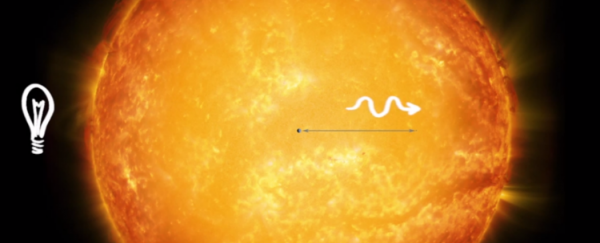When you look at them in the sky, the Sun and the Moon appear to be about the same size. But that fiery ball of gas is a whole lot bigger than our humble Moon - 400 times bigger, to be precise. And it only looks so small in our sky because it's, you know, 150,000,000 km away from us. That said, exactly how big is the Sun, and how do scientists go about figuring out something like that?
Just to really hammer home how big it actually is, according to the latest episode of MinutePhysics, it takes light over 4.5 seconds to travel across its face. When you compare other objects in the Solar System to the Sun, you'll see little bodies like Pluto and Charon look like specks in the dust compared to it. But what about big ol' Jupiter, which has a radius 10 times the size of Earth's? As the video above shows, big ol' Jupiter is only one tenth the radius of the Sun.
Henry from MinutePhysics explains that if that objects in the sky look to be around the same size, like our Sun and Moon, it means their radii divided by their distances to each other will be about the same value. And while it's a coincidence that the Moon and the Sun are equal in this sense, they also happen to have about the same effect on our tides. Why? Watch the latest episode of MinutePhysics above to find out.
